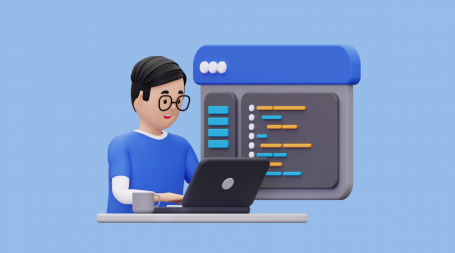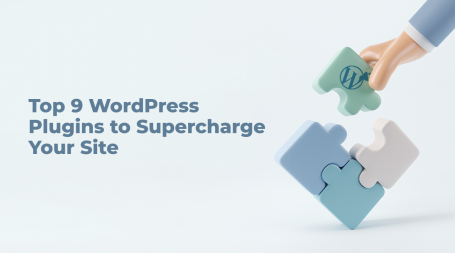Are you thinking of starting an online store? That’s awesome. I’m excited for you!
But here’s the thing – launching an e-commerce business isn’t something you just whip up overnight. It takes careful planning and strategic execution at each step to build a profitable website that customers love.
Trust me, I’ve been there. I’ve helped dozens of entrepreneurs bring their own online stores to life from scratch. And it’s been an enriching journey!
So in this guide, I want to walk you through the entire process from start to finish – from coming up with an idea to optimizing a live website.
I aim to get you fully prepared for the exciting (and challenging!) road ahead. So you can confidently tackle every phase of creating a successful e-commerce brand.
Let’s do this!
Phase 1: Research and Planning
Every thriving e-commerce store starts with thoughtful research and planning. Don’t rush into website development until you’ve done your homework in these key areas:
Market Research
The first step is understanding your potential customers inside out. Spend time identifying target demographics, and analyzing their needs and shopping habits. Study both your direct and indirect competitors to find gaps you can fill. This market research will reveal how to attract and satisfy your ideal customers.
Business Model
Next, determine the right e-commerce model for your business – B2C, B2B, C2C marketplaces, etc. Outline your pricing structure, profit margins, and potential partnerships. Your business model needs to align with your products, customers, and growth strategy.
Product Selection
Carefully curate your product catalog based on the target audience’s interests. Will you sell physical products, digital downloads, or services? Identify your initial product lineup as well as expansion plans. Prioritize unique, high-quality offerings that provide real value.
Phase 2: Creating a Business Plan
With initial research completed, it’s time to create a detailed business plan. This key document will guide your strategy and execution. Ensure it covers these vital components:
Business Strategy
Define your brand’s unique value proposition, positioning, and key advantages. Outline specific goals and metrics for online sales, customer acquisition, repeat business, etc. Identify risks and mitigation strategies. Clarify branding, pricing, and marketing strategies.
Financial Projections
Do revenue projections, cost analysis, and ROI expectations. Factor in website development/hosting, inventory, shipping, payment processing, and marketing costs. This financial planning is essential for managing cash flow and expenses pre-launch and post-launch. Adapt as needed.
Phase 3: E-Commerce Website Development
Now you’re ready to start building your online store! Follow these steps to transform your vision into a reality:
Choose E-Commerce Platform
Evaluate e-commerce platforms like Shopify, WooCommerce, Magento, etc., based on your business model, tech capabilities, and budget. Small businesses often turn to Squarespace website builder for its easy-to-use drag-and-drop interface. Squarespace offers beautiful templates, built-in e-commerce functionality, and excellent support, which makes it an ideal choice for small business owners new to e-commerce. After evaluating your specific needs, you can decide if Squarespace is the right platform for your online store.
Website Design
Work with a reliable web design partner to create an intuitive, visually appealing website optimized for your products and customers. Prioritize simple navigation, engaging content, and clear calls to action.
Mobile Responsiveness
Build a responsive website that adapts seamlessly across desktop and mobile. With most shopping done on smartphones today, mobile-friendliness is mandatory for e-commerce success.
Phase 4: Setting Up Payments
Enabling secure online payments is a vital step before launch. Consider these key actions:
Payment Gateways
Integrate trusted payment gateways suited for your business location and customer base e.g. Stripe or PayPal for global payments, and local gateways for specific countries.
Secure Transactions
Leverage SSL encryption and security protections like Verified by Visa and Mastercard SecureCode. Reassure customers their financial data is completely safe.
Phase 5: Logistics and Inventory
Get your product delivery and inventory management locked down:
Shipping
Define affordable shipping rates and reliable carriers. Allow customers to conveniently track deliveries. Manage returns/exchanges smoothly.
Inventory Management
Use a centralized inventory management system. Continuously track and update product quantities, shipping times, backorders, etc. to avoid overselling.
Phase 6: Marketing and SEO
It’s time to get the word out! Promote your new business effectively:
SEO Optimization
Perform on-page and off-page optimization for organic searches. Make the website easily discoverable for relevant product terms so you attract high-intent visitors.
Marketing Activities
Create targeted campaigns across channels like email, social media, and influencer partnerships. Offer special discounts or perks to early customers. Be helpful and engaging.
Phase 7: Website Testing and Launch
You’re in the home stretch! Follow best practices pre-launch:
Quality Assurance Testing
Rigorously test your website with various use cases to identify bugs. Verify payment integration, shipping calculator, etc. Work out all issues.
Launch
Once testing is complete, officially launch your polished, high-performing website. Announce it on all your marketing channels and invite visitors.
Phase 8: Post-Launch Optimization
Launching your e-commerce website is only the beginning. These ongoing actions drive long-term success:
Customer Support
Provide excellent customer service via phone, email, and live chat. Quickly resolve order issues, product concerns, returns, etc. Nurture relationships and trust.
Website Maintenance
Continuously monitor and update your website for optimal uptime, speed, and security. Stay on top of technical SEO best practices.
Product Expansion
Keep your inventory updated with customer-centric products. Analyze metrics like bestsellers, abandoning carts etc. to guide merchandising decisions.
Final Thoughts
Building a profitable, sustainable e-commerce business takes careful strategic planning followed by consistent fine-tuning after launch. Now that you understand the key phases, you can confidently tackle your online store website development – from initial idea to ongoing enhancement. Remember to stay nimble and customer-focused. Here’s to ecommerce success!















